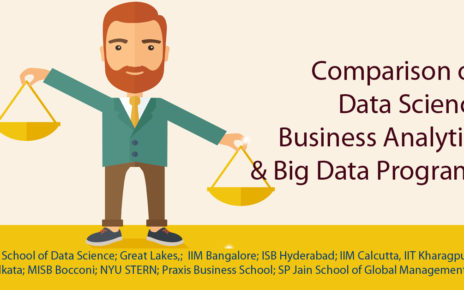Few industries have more to offer and to gain from big data than telecommunications. For decades, communications service providers (CSPs) have transported and captured huge volumes of information about customer calling patterns, wireless data usage, location, network bandwidth statistics, and even the individual apps and webpages accessed by mobile devices.
Until recently, much of that data was discarded. There simply was no efficient way to mine value from it and storing it was expensive. However, this is all changing. Big data technologies, when combined with streaming analytics and analytics at scale, are enabling telecommunications companies to uncover significant new insights about their infrastructure and their customers. These insights are leading to massive changes in the ways they do business. In addition, with new legislation that opens the door for internet service providers to sell data about their customers’ online behavior, data may become a significant new revenue source.
As the range of telecommunications services has expanded with the adoption of mobile data, so have the potential applications to improve efficiency and generate new business. Providers can leverage this information to better understand their own business. For example, usage pattern data can guide bandwidth allocation and the positioning of equipment such as cell towers. It can also help identify new services to offer customers and even open up new revenue streams in areas such as targeted advertising.
Big data technologies are revolutionizing telecommunications. Tools like Apache Hadoop, streaming analytics, and machine learning are opening up new opportunities for CSPs to gain insights from data sets that were previously unwieldy.
This industry guide looks at the trends driving the big data revolution in telecommunications, how different segments of the industry are being affected, and how big data is being put to work in the field to change the competitive equation. This guide outlines a number of issues the industry faces and discusses how these trends are driving new solution areas. It also looks at use cases that show how big data and analytics are yielding game-changing breakthroughs for telecom providers today.
The Motivation for Big Data
With the rapid expansion of smart phones and other connected mobile devices, communications service providers (CSPs) need to rapidly process, store, and derive insights from the diverse volume of data travelling across their networks. Big data analytics can help CSPs improve profitability by optimizing network services/usage, enhancing customer experience, and improving security. According to McKinsey, the potential for Telcos to profit from applying data science effectively is substantial. Examples include:
- Predicting the periods of heaviest network usage, and targeting steps to relieve congestion
- Identifying the customers most likely to defect, and targeting steps to prevent churn
- Identifying the customers most likely to have problems paying bills, and targeting steps to improve the recovery of payments
Big Data Use Cases In Telecom
Telecommunication companies collect massive amounts of data from call detail records, mobile phone usage, network equipment, server logs, billing, and social networks, providing lots of information about their customers and network, but how can telecom companies use this data to improve their business?
Most telecom use cases fall into these main categories: customer acquisition and retention, network services optimization, and security.
Most telecom use cases fall into these main categories: customer acquisition and retention, network services optimization, and security.
Customer 360
Using data science in order to better understand and predict customer behaviour is an iterative process, which involves:
- Data Discovery and Model Creation:
- Analysis of historical data.
- Identifying new data sources, which traditional analytics or databases are not using due to the format, size, or structure.
- Collecting, correlating, and analysing data across multiple data sources.
- Knowing and applying the right kind of machine learning algorithms to get value out of the data.
- Using the Model in production to make predictions
- Data Discovery and updating the Model with new data.
In order to understand the customer, a number of factors can be analysed such as:
- Customer demographic data (age, marital status, etc.)
- Sentiment analysis of social media
- Customer usage patterns, geographical usage trends
- Calling-circle data
- Browsing behaviour from clickstream logs
- Support call centre statistics
- Historical data that shows patterns of behaviour that suggest churn
With this analysis, telecom companies can gain insights to predict and enhance the customer experience, prevent churn, and tailor marketing campaigns.
The architecture below shows how batch processing on different data sources can be used to build and update a model, which can then be used for real-time predictions on streaming data.






